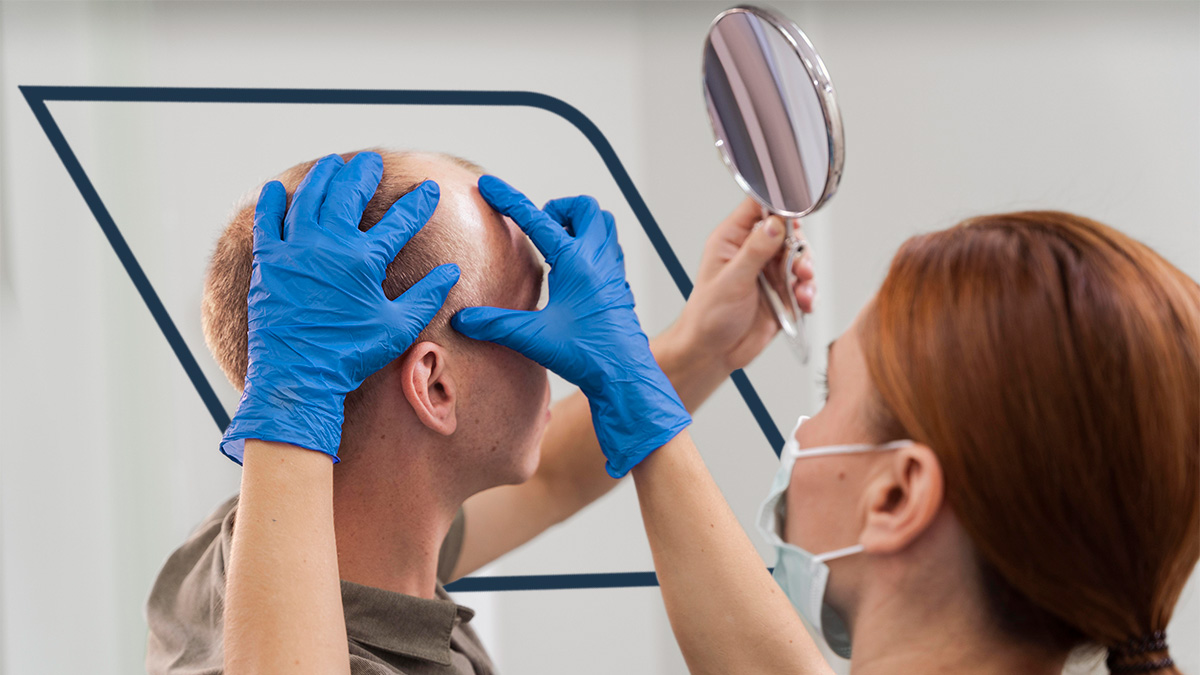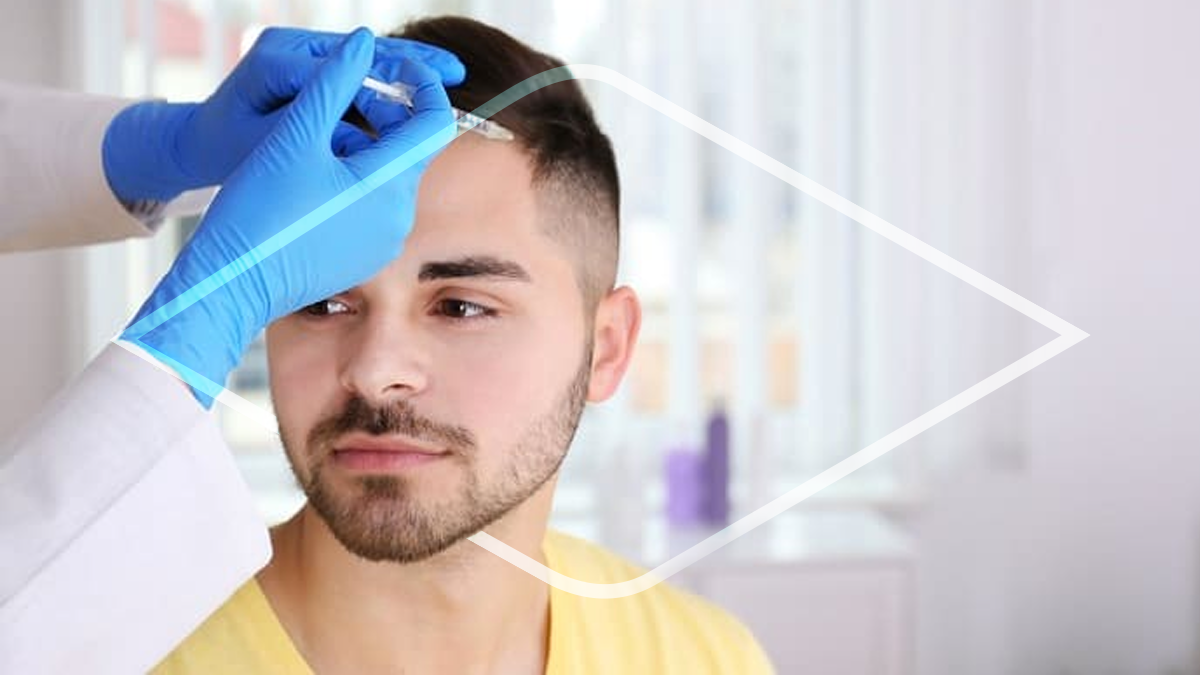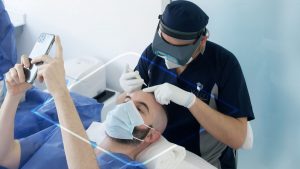Male hair loss represents a significant concern for millions of men worldwide, affecting self-esteem, social interactions, and professional confidence. Choosing a hair transplant male procedure requires careful consideration of surgical expertise, procedural technology, and facility quality. Modern clinics provide advanced options tailored to male-specific patterns of hair loss, offering long-term solutions that prioritize both aesthetics and patient safety.
Understanding Male Hair Loss Patterns
Male hair loss is predominantly influenced by androgenic alopecia, commonly known as male pattern baldness. Recognizing hair loss patterns is essential when evaluating a hair transplant male procedure:
- Norwood-Hamilton Classification: Divides male hair loss into seven progressive stages.
- Frontal Hairline Recession: Common in men aged 25–40, often requiring strategic hairline restoration.
- Vertex and Crown Thinning: May necessitate higher graft counts or combined procedures for full coverage.
- Diffuse Thinning: Occurs less frequently in males and may impact donor area availability.
Accurate assessment ensures that male patients receive personalized transplant strategies that address both immediate coverage needs and long-term hair preservation.
Key Considerations for Selecting a Hair Transplant Male Clinic
A reputable hair transplant male facility must meet rigorous criteria:
- Surgeon Expertise: Look for board-certified surgeons with extensive experience in male hair restoration.
- Clinic Accreditation: Ensure compliance with local and international standards, including ISHRS guidelines.
- Advanced Technology: Clinics should utilize FUE, FUT, DHI, and robotic-assisted methods tailored for male hair loss patterns.
- Patient-Centric Approach: Comprehensive consultations, individualized treatment plans, and post-operative care protocols are essential.
- Track Record: Review before-and-after photos, peer-reviewed studies, and patient testimonials to assess results reliability.
Selecting a clinic with these attributes increases the likelihood of achieving natural-looking, sustainable outcomes while minimizing potential complications.
Male-Specific Hair Transplant Techniques
Follicular Unit Extraction (FUE)
FUE is the most widely recommended technique for male hair transplantation:
- Individual follicular units are extracted from donor regions, reducing scarring.
- Placement is optimized to mirror natural male hairline patterns.
- Recovery is faster compared to strip-based procedures, allowing quicker return to daily activities.
Follicular Unit Transplantation (FUT)
FUT remains an option for men requiring extensive graft coverage:
- A strip of scalp is harvested and dissected into follicular units.
- Suitable for large-scale restoration in advanced Norwood stages.
- Modern closure techniques minimize visible scarring.
Direct Hair Implantation (DHI)
DHI allows precise control over graft placement and density:
- Uses specialized implantation pens to position follicles without pre-made incisions.
- Maintains follicle viability, enhancing growth outcomes.
- Particularly advantageous for reconstructing intricate frontal hairlines in men.
Robotic-Assisted Procedures
Robotic systems, such as ARTAS, support precision and consistency in male hair transplantation:
- Automated follicle extraction reduces variability and increases graft survival.
- Ideal for complex male hair loss patterns, including limited donor areas.
- Enhances procedural efficiency while maintaining high safety standards.
Cost Analysis for Hair Transplant Male Procedures
Costs vary based on procedure type, clinic location, surgeon expertise, and graft numbers:
| Procedure | Typical Graft Count | Average Cost |
|---|---|---|
| FUE | 1,500–2,500 | $6,000–$12,000 |
| FUT | 2,000–3,500 | $5,000–$10,500 |
| DHI | 1,500–2,500 | $8,000–$15,000 |
Additional factors influencing costs include medications, post-operative care, and specialized male pattern hairline design consultations. Many clinics offer financing plans to accommodate patient budgets without compromising quality.
Patient Experience in Male Hair Transplant Clinics
A high-quality hair transplant male experience encompasses:
- Comprehensive Consultation: Detailed assessment of hair loss pattern, donor area analysis, and personalized treatment strategy.
- Transparency: Open discussion of procedural risks, expected outcomes, and realistic timelines.
- Follow-Up and Support: Regular monitoring, telemedicine options, and guidance on optimal post-operative care.
Patient satisfaction is strongly linked to communication quality, procedural precision, and the perceived expertise of the surgical team.
Safety and Compliance Standards
Male hair transplant clinics prioritize patient safety through:
- Sterile surgical environments and adherence to aseptic protocols.
- Preoperative screening for systemic health issues such as diabetes, hypertension, and autoimmune conditions.
- Risk management protocols for complications such as infection, follicle loss, or unnatural growth patterns.
- Structured post-operative care, including medication management, activity restriction guidance, and hair growth monitoring.
Accredited facilities adhering to national and international guidelines ensure that male patients receive safe, effective treatment.
Innovations in Male Hair Transplant
Emerging techniques and technologies at reputable hair transplant male facilities include:
- Platelet-Rich Plasma (PRP) Therapy: Enhances follicle viability and promotes faster recovery.
- Stem Cell Applications: Supports regeneration in thinning areas and donor zones.
- High-Density Transplantation: Maximizes coverage for patients with advanced male pattern baldness.
- Genetic and Hormonal Profiling: Enables individualized treatment plans and predicts long-term hair loss progression.
Such innovations place male patients at the forefront of clinically proven, research-backed hair restoration methodologies.
Comparison of Male Hair Transplant Clinics in Major U.S. Cities
| City | FUE Cost | FUT Cost | DHI Cost | Key Advantages |
|---|---|---|---|---|
| Chicago | $6,000–$12,000 | $5,000–$10,500 | $8,000–$15,000 | Experienced surgeons, high patient satisfaction |
| Los Angeles | $7,000–$13,000 | $6,000–$11,000 | $9,000–$16,000 | Advanced aesthetic focus, celebrity clientele |
| New York | $6,500–$12,500 | $5,500–$11,000 | $8,500–$15,500 | Innovative techniques, high procedural volume |
Men seeking hair restoration should weigh factors such as surgeon expertise, clinic reputation, and personalized care when selecting a facility.
Psychological Impact of Male Hair Transplant
Beyond aesthetic improvement, hair transplant male procedures provide psychological and social benefits:
- Enhanced confidence and self-image.
- Positive influence on professional and social interactions.
- Reduction of stress, anxiety, and potential depressive symptoms related to hair loss.
Research in journals such as Dermatologic Surgery demonstrates substantial improvement in male patient quality of life post-transplant.
Common Risks and Considerations
While modern male hair transplant clinics maintain high standards, patients should be aware of potential risks:
- Temporary shedding of transplanted hair (shock loss).
- Rare instances of infection or scalp inflammation.
- Uneven hair density if surgical planning is insufficient.
- Minimal scarring, particularly with FUT procedures.
Proper selection of a reputable clinic, adherence to pre-operative instructions, and diligent post-operative care mitigate most risks.
How can I ensure a successful male hair transplant?
Choose an accredited clinic with experienced surgeons, advanced technology (FUE, DHI, FUT), and a comprehensive post-operative care plan. Review patient outcomes and conduct a detailed consultation to align expectations with realistic results.
A credible Hair Transplant Male clinic combines surgical precision, advanced technology, and comprehensive patient support to deliver reliable, natural outcomes. Men seeking hair restoration should evaluate surgeon expertise, procedural options, and facility standards to optimize results. This discussion naturally extends to emerging global hair transplant trends, innovations in male hairline design, and cutting-edge technologies shaping male hair restoration worldwide.







